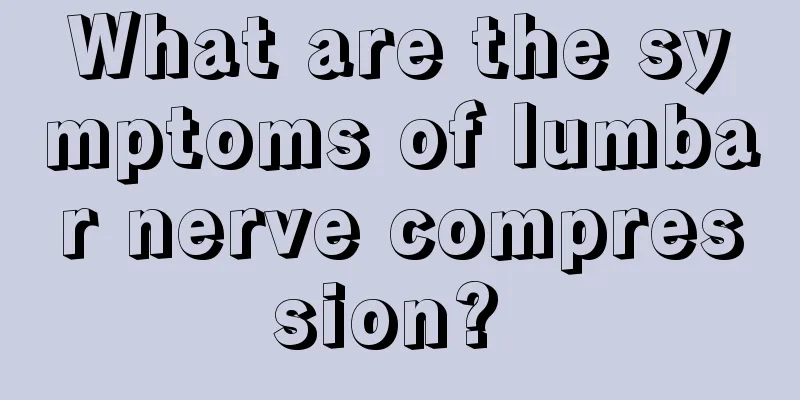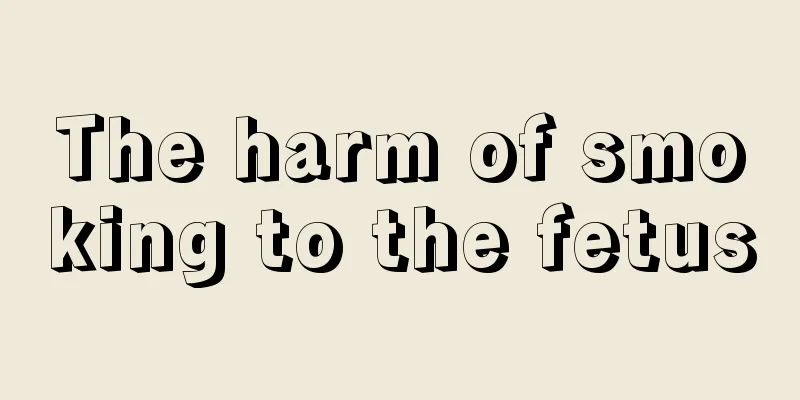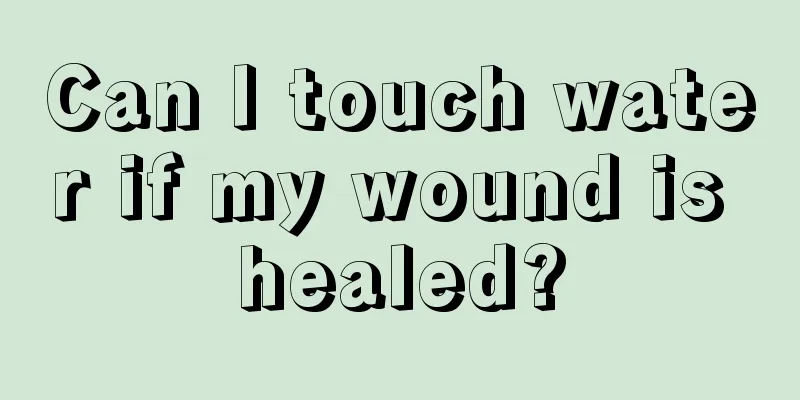What are the symptoms of lumbar nerve compression?

|
Intervertebral disc herniation is a common cause of low back and leg pain. If the lumbar nerves are compressed for a long time, it is easy to suffer from lumbar diseases. If it is mild compression, the lumbar disease caused can be treated by conservative treatment. If it is more serious, it is best to have timely surgical treatment. If necessary, it is best to see a doctor. The doctor will adopt appropriate treatment methods according to the specific condition of the body. Symptoms of lumbar spinal nerve compression When the protruding lumbar disc tissue compresses and stimulates the nerve roots located in the spinal canal, it causes lower limb pain that radiates along the nerves, and the pain is more sensitive than in the lower back. The main clinical symptom of lumbar disc herniation is nerve damage, which affects the lumbar sacral plexus. The nerves involved are: femoral nerve, obturator nerve, and sciatic nerve. The symptoms produced are all motor and sensory disorders in the areas innervated by the above nerves. The femoral nerve originates from the L2-L4 spinal nerves and is the thickest of the lumbar plexus nerves. It runs between the psoas major and iliopsoas muscles in the iliac fossa, sends out muscular branches that are distributed to the psoas major and iliopsoas muscles, passes through the inguinal ligament to the thigh, and immediately divides into three branches, which innervate the muscles and skin in their distribution areas. ① Quadriceps femoris muscle branch. ② Saphenous nerve: distributed below the kneecap, from the anterior medial surface of the small intestine to the medial edge of the foot. ② Anterior cutaneous branch: distributed on the front of the thigh. Sciatica is the main symptom of lumbar disc herniation. The sciatic nerve is actually composed of the common peroneal nerve and the tibial nerve. These two nerves are surrounded by a common sheath of connective tissue from their origin to above the popliteal fossa, but the fibers of the two nerves are not cross-connected together. Most of the sciatic nerves exit the pelvis through the inferior piriformis foramen to the buttocks. Then it goes down vertically between the greater trochanter and the ischial tuberosity to the posterior part of the thigh. About 40% of the population has variations in the sciatic nerve in the pelvis and buttocks. The pain caused by the sciatic nerve or other parts passing through the piriformis muscle and being compressed by muscle contraction is called piriformis syndrome. Everyone should pay attention to the symptoms of lumbar nerve compression. Once the nerves are compressed, the body and daily life will be greatly affected. Now we should actively prevent such diseases in our daily lives, pay attention to the combination of work and rest, and seek treatment as soon as possible if lumbar diseases are found. What to do if the waist is compressed What should I do if lumbar disc herniation compresses the nerves? When the neurological examination shows L3-4 herniation (L4 nerve root compression), the knee reflex may be reduced or absent, and the sensation on the inner side of the calf may be reduced. When L4-5 herniation occurs (L5 nerve root compression), the sensation of the dorsum of the anterior and lateral calf foot is reduced, and the muscle strength to extend to the second toe is often reduced. When L5-S1 herniation occurs (S1 nerve root compression), there will be decreased sensation on the posterior calf and lateral foot, decreased muscle strength of the 3rd, 4th, and 5th toes, and decreased or absent Achilles tendon reflex. If the symptoms of nerve compression are severe, the affected limb may have muscle atrophy. What should I do if my lumbar disc herniation compresses the nerves? As for intervertebral disc bulging, it is actually a very common clinical disease. Experts point out that it is what we often call lumbar disc herniation. It refers to the protrusion of the nucleus pulposus into the annulus fibrosus, causing it to bulge, but the annulus fibrosus is not ruptured. Generally, the spinal canal space is not narrowed, and there is less adhesion with the surrounding ligament tissue. When this disease occurs, patients usually suffer from lower back pain and sciatica. Before the onset of the disease, they often have a history of lumbar sprain, lumbar fatigue, or lumbar cold. Coughing, sneezing and defecation can aggravate low back pain and radiating pain. So, how to treat disc bulging? What should I do if my lumbar disc herniation compresses the nerves? In fact, there are many treatments for disc herniation in clinical practice, so experts remind patients to choose the one that suits them. The most common one is epidural steroid injection: this method can inhibit the excitability of nerve endings running in the epidural space, while improving local blood circulation, making it easier for local metabolic waste to be removed from the blood circulation, thereby playing an anti-inflammatory role and achieving the purpose of relieving pain. However, if a huge intervertebral disc herniation compresses the nerve root, the mechanical stimulation cannot be relieved and the symptoms cannot be relieved. In addition, in clinical practice, patients with intervertebral disc bulging can also be treated with sacral nucleus chemical dissolution, which is often called "nucleolysis". This is to use some protease drugs to dissolve the nucleus pulposus of the intervertebral disc to reduce or eliminate the compression of the nerves due to the posterior protrusion of the nucleus pulposus. It is suitable for patients with a medical history of less than 2 months, who have not responded to other non-surgical treatments or have poor surgical results. However, it is contraindicated for patients who are allergic to protease drugs (who have undergone this injection in the past, and re-injection will increase the risk), those with lumbar spinal stenosis or foot drop due to lumbar disc herniation, those with urinary and fecal incontinence, pregnant women, and children under 14 years old. It cannot be used. |
<<: The most effective way to treat premature ejaculation
>>: What are the symptoms of potassium poisoning?
Recommend
Treatment plan for immature teratoma in teenage girls
What is the treatment plan for immature teratoma ...
How can we have a good sleep?
As we all know, adequate sleep can protect the br...
What are the early symptoms of Parkinson's disease?
Parkinson's disease is a common disease in da...
Why can't nasopharyngeal cancer be detected by biopsy
Why can’t nasopharyngeal cancer be detected throu...
How to use Nosqing physiological seawater
Northclear physiological seawater is relatively u...
How do prostate tumors come about
Prostate tumors belong to urology, and most of th...
Where is the first part of a person to age?
Aging is the cruel reality that people are most r...
Lip Correction Surgery
Micro-adjustment surgery seems to be a common phe...
The relationship between temperature and humidity
In life, many good living conditions are created ...
What should we pay attention to in surgical treatment of lung cancer?
There are many ways to treat lung cancer, and sur...
What are the dangers of thyroid cancer? Will thyroid cancer affect normal eating?
One of the hazards of thyroid cancer is that it a...
Is NT examination done by B-ultrasound?
For the sake of their own health and that of thei...
Sequelae of brain trauma, headache and dizziness
The brain is one of the most important parts of o...
What foods are good for colon cancer? Dietary principles for colon cancer patients
Colon cancer is a malignant tumor originating fro...
What are the symptoms of uterine cancer
Uterine cancer is one of the most common gynecolo...









